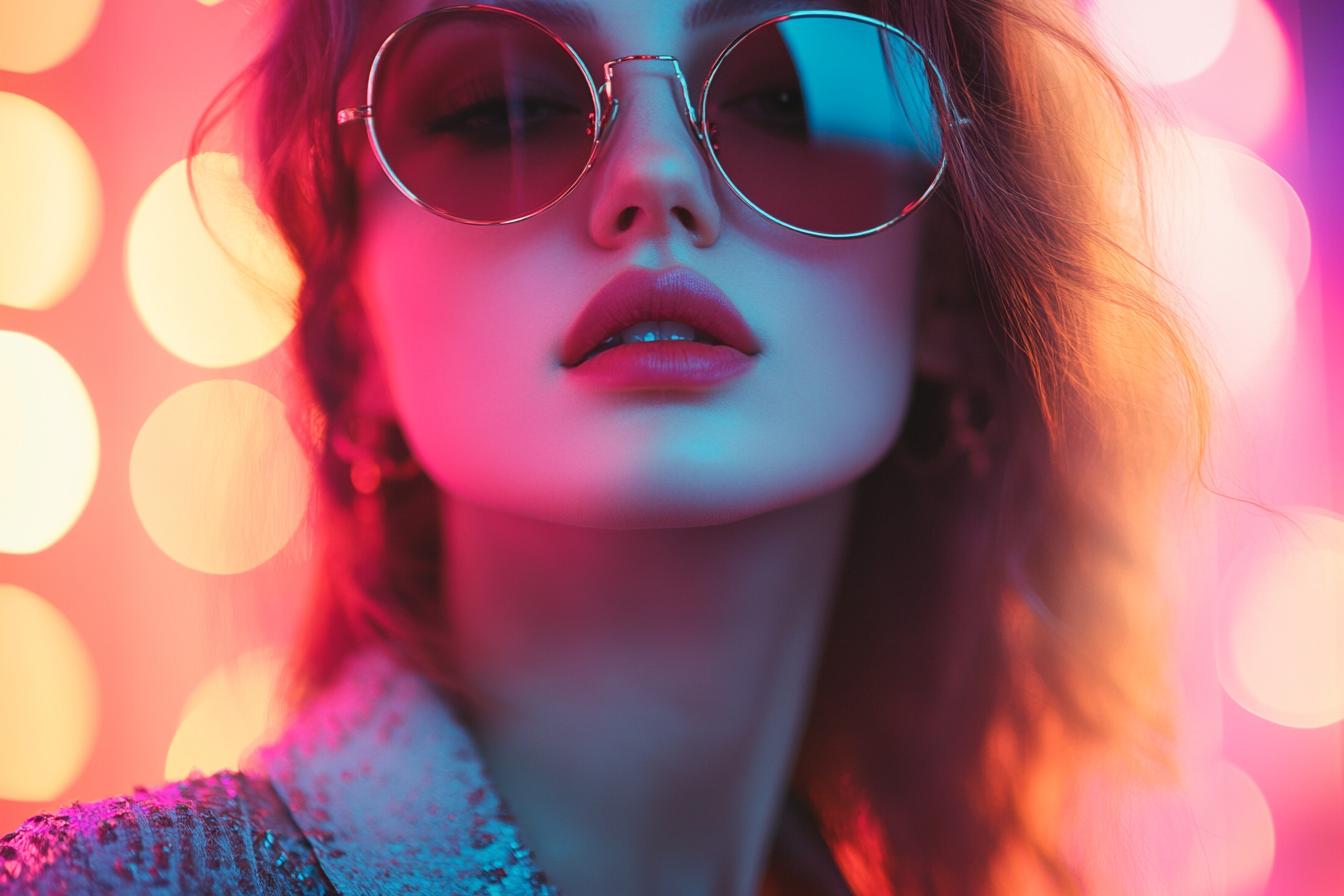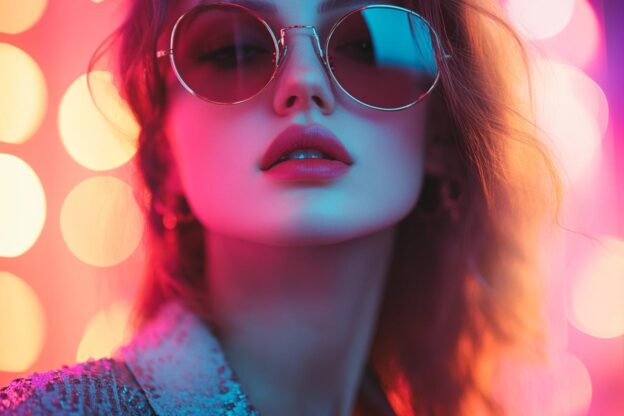Pop music and fashion have always had a close relationship, with trends often being driven by the latest sounds and artists. Radio, as a powerful medium, has played a crucial role in shaping this symbiotic relationship. Consider the iconic 1980s, where MTV’s rise in popularity coincided with the explosion of synth-pop music and its associated fashion trends. The bold colors, neon hues, and geometric patterns of the era were heavily influenced by the music videos and the artists themselves, instantly becoming a global phenomenon. This is just one example of how radio and music, through their combined influence, can create a ripple effect that impacts fashion trends, making it a powerful force in shaping cultural landscapes.
Furthermore, radio has provided a platform for showcasing new musical artists and their unique styles, which often translate into fashion trends. Have you ever wondered why certain clothing styles or accessories become popular? Often, it’s because a particular artist is seen wearing them, and their influence spreads through radio broadcasts and music videos. For instance, the rise of hip-hop in the late 1980s and early 1990s led to the adoption of sportswear, oversized clothing, and sneakers, creating a distinct street fashion aesthetic that continues to influence trends today. Radio, as a ubiquitous platform, played a key role in bringing this music and its associated fashion trends to the forefront of popular culture.

Pop Music and Fashion
1. Pop Music and Fashion
Pop music and fashion have a long and intertwined history. Music often inspires fashion trends, with artists setting the pace for what is considered cool and stylish. Think about the iconic looks of the Beatles, Madonna, or Lady Gaga. Their outfits became instantly recognizable and sparked copycat trends across the globe. These trends can range from clothing styles and accessories to hairstyles and makeup. As pop music evolves, so does the fashion associated with it, reflecting the changing tastes and cultural movements of the time.
Fashion, in turn, can also influence pop music. A musician’s image, built through clothing, stage presence, and overall aesthetic, can contribute to their brand and help them connect with their audience. A strong visual identity can amplify a song’s impact, making it more memorable and appealing. Think of the iconic looks of David Bowie, who constantly reinvented himself through fashion, and how these visuals played a vital role in his music’s enduring legacy.
2. Mutual Influence and Inspiration
Pop music and fashion often influence each other, creating a dynamic interplay of style and sound. Musicians use fashion to express their artistic vision and connect with their audience, while fashion designers draw inspiration from musical trends and lyrics. This reciprocal relationship is evident in the way music videos showcase bold fashion statements, and how runway shows incorporate elements of popular music to enhance their presentations. Musicians like Lady Gaga and Beyoncé have pushed boundaries with their daring fashion choices, influencing trends and sparking conversations about self-expression.
This mutual influence extends beyond individual artists and brands. Pop culture itself serves as a catalyst for both musical and fashion innovation. Trends like grunge, hip hop, and disco have impacted both music and fashion, creating distinct subcultures with their own unique styles. This cross-pollination of ideas allows for constant evolution and innovation, ensuring that both pop music and fashion remain relevant and exciting for audiences worldwide.
3. Fashion Trends Driven by Pop Stars
Pop stars have long been fashion icons, influencing trends and inspiring designers. Their bold choices, whether it’s vibrant colors, statement jewelry, or cutting-edge silhouettes, often trickle down to the masses. Celebrities embrace daring looks on red carpets and in music videos, creating a buzz and igniting a desire to emulate their style. This influence is amplified through social media, where fans eagerly follow their idols’ sartorial choices and eagerly seek out similar styles.
The impact of pop stars goes beyond fleeting trends. Their fashion choices can challenge conventional norms and empower self-expression. They can push boundaries and celebrate individuality, encouraging fans to embrace their own unique style. From vintage revivals to the rise of streetwear, pop stars are constantly evolving fashion’s landscape, making it a dynamic and exciting space for creativity and self-discovery.
4. Music Videos as Fashion Platforms
Music videos have long served as a visual companion to songs, but they have also evolved into powerful fashion platforms. Artists, stylists, and directors collaborate to create dynamic visual narratives that showcase clothing, accessories, and overall aesthetics. From avant-garde ensembles to street-style looks, music videos present a diverse range of fashion trends and expressions. This visual spectacle captures the attention of audiences and influences fashion choices, sparking conversations and creating a buzz around specific styles.
The impact of music videos on fashion extends beyond mere inspiration. They often introduce new designers and brands to a wider audience, creating opportunities for collaborations and brand partnerships. Moreover, music videos serve as a powerful medium for showcasing emerging trends and pushing creative boundaries. Artists and stylists often experiment with bold and innovative looks, influencing fashion trends and inspiring designers to create new and exciting pieces. As a result, music videos have become an integral part of the fashion landscape, shaping trends and reflecting the ever-evolving world of style.
5. Cultural Impact and Identity
Pop music and fashion often intertwine, creating a powerful force that shapes and reflects cultural identities. Music serves as a soundtrack to life, and its rhythms and lyrics often resonate with shared experiences and emotions. Fashion, in turn, provides a visual language for expressing personal style and belonging to specific groups or subcultures. Together, these two forces can amplify and celebrate cultural trends, leading to a sense of unity and shared identity.
The impact of pop music and fashion on identity goes beyond simply mirroring trends. It can also challenge and redefine norms. Artists and designers often use their platforms to promote social change, raise awareness about important issues, and encourage self-expression. This dynamic interplay between music, fashion, and cultural identity fosters dialogue, promotes understanding, and creates a space for individuals to explore and express their unique selves.
6. Marketing and Commercialization
Pop music and fashion often go hand in hand, and their commercialization strategies frequently mirror one another. Marketing campaigns leverage the powerful synergy between these two industries. For instance, pop stars frequently launch fashion lines or collaborate with established brands. These collaborations allow brands to tap into the massive fan bases of these artists, while artists can expand their reach into the fashion world and create new revenue streams. This cross-promotion generates buzz and excitement, leading to increased brand awareness and sales for both the artist and the brand.
Moreover, the constant evolution of pop music and fashion trends creates a dynamic marketplace. Marketers strive to stay ahead of the curve, identifying emerging trends and adapting their strategies accordingly. Social media platforms play a crucial role in this process, allowing brands to connect directly with consumers and gauge their preferences. This rapid pace of change ensures that both industries remain exciting and engaging, attracting new audiences and driving continued commercial success.
Conclusions
So, there you have it! Pop music and fashion are like two peas in a pod, constantly influencing and inspiring each other. Pop stars, with their dazzling outfits and music videos, set major fashion trends, making them walking billboards for designers and brands. It’s all about capturing the attention of fans, and what better way to do that than with a catchy tune and a stylish look?
But it goes deeper than that. Pop music and fashion together reflect our cultural identity, shaping how we see ourselves and the world around us. It’s a powerful combination that also fuels a huge industry, making a lot of money from marketing and commercialization. It’s a fascinating dance between music and fashion, and it’s definitely something we’ll continue to see evolve in the years to come.
